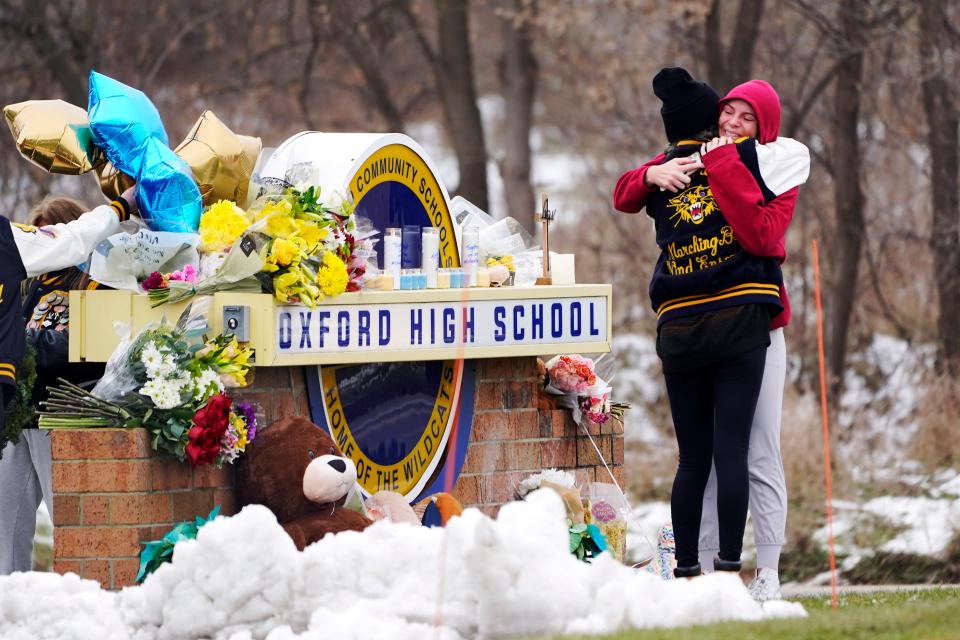We've taught kids to fear school shootings. But lost sight of how uncommon they are.
The recent shooting at Michigan’s Oxford High School in which four students were killed and seven others were injured has rekindled fears for students and their parents everywhere – fears that had been eclipsed by other safety concerns while schools were shuttered due to COVID-19.
With most students back in classroom after the holiday break, in the minds of some folks, it is once again open season for school shootings: time to beef up security, arm teachers, and train students how to “run, hide, fight” in case theirs is the next school to be confronted by an armed assailant.
The risk of school shootings has been a major point of concern over the past decade. From 2010 through 2021, there were more than 800 K-12 school-related shootings in the U.S. involving a total of 1,149 victims (910 of whom were injured in any way), according to a database compiled at the Naval Postgraduate School’s Center for Homeland Defense and Security.
That’s an average of more than one shooting incident a week. Sounds awful indeed.
In-school shootings and fatalities
It is noteworthy that fewer than half of the victims (532, to be exact) were students; the rest included staff members, parents, plus hundreds with no connection to the school whatsoever.
Moreover, 94 of the student victims sustained gunshot wounds that proved to be fatal; some who were targeted escaped unharmed or suffered only minor injury.
In the realm of school shootings, it is, as they say in real estate, all about “location, location, location.” Around three-quarters of all victims, including students, were shot at a location outside of the school building – in the parking lot, on the athletic fields, on a school bus, or at an off-campus school event.
In-school shootings are somewhat more likely to result in fatalities given the confined space that limits the ability to escape. Over the past dozen years, nearly 70 students have been fatally shot inside of school during school hours, a death toll that translates to an average of almost six student fatalities per year.
That is out of the more than 50 million children attending public or private schools – for a roughly one-in-10 million chance of death by gunfire.
Most of those in-school student fatalities were associated with five mass killings (20 students at the Sandy Hook Elementary School in Connecticut; four students at Marysville High School in Washington; 14 students at the Marjory Stoneman Douglas High School in Florida; eight students at Santa Fe High School in Texas; and four at the recent incident in Oxford, Michigan).

Since 2010, there have been 19 in-school shootings with at least one student fatality, for an average of less than two per year.
And that is out of 130,000 schools nationwide.
Notwithstanding the occasional fatal assault, schools are safe. While in class, students enjoy a level of supervision and structure that they don’t necessarily have during the riskier after-school hours or even while at home. Of course, considering the relative risks amid the omicron surge, we must at this juncture focus more on getting vaccine shots in student arms and worry less about students getting shot by someone armed.
Realistically assessing the risk
We can all sympathize with the families who lost a child to gun violence at Oxford High School and the handful of other schools that have endured similar dreadful events.
The pain caused by these tragedies is immense and wide-ranging. We should continue to encourage vigilance so that students and teachers might help to avert a tragedy when observing signs suggesting an impending attack.
At the same time, however, we must be just as concerned not to instill fears that are well beyond the actual level of risk. Many students are traumatized by participating in unannounced and realistic active shooter drills, and surrounding them with fortress-like security serves as a constant reminder of impending danger.
Finally, schools can make better use of scarce resources than to spend excessive amounts on security measures designed to ward off the unlikely active shooter. Instead, investment in teachers, guidance counselors and school psychologists can help millions of school children – not just the handful who might come to school armed with an intent to kill.
James Alan Fox is the Lipman Professor of Criminology, Law and Public Policy at Northeastern University and a member of USA TODAY's Board of Contributors.
This article originally appeared on USA TODAY: Shooter drills terrify students. And overplay the risk at schools.

